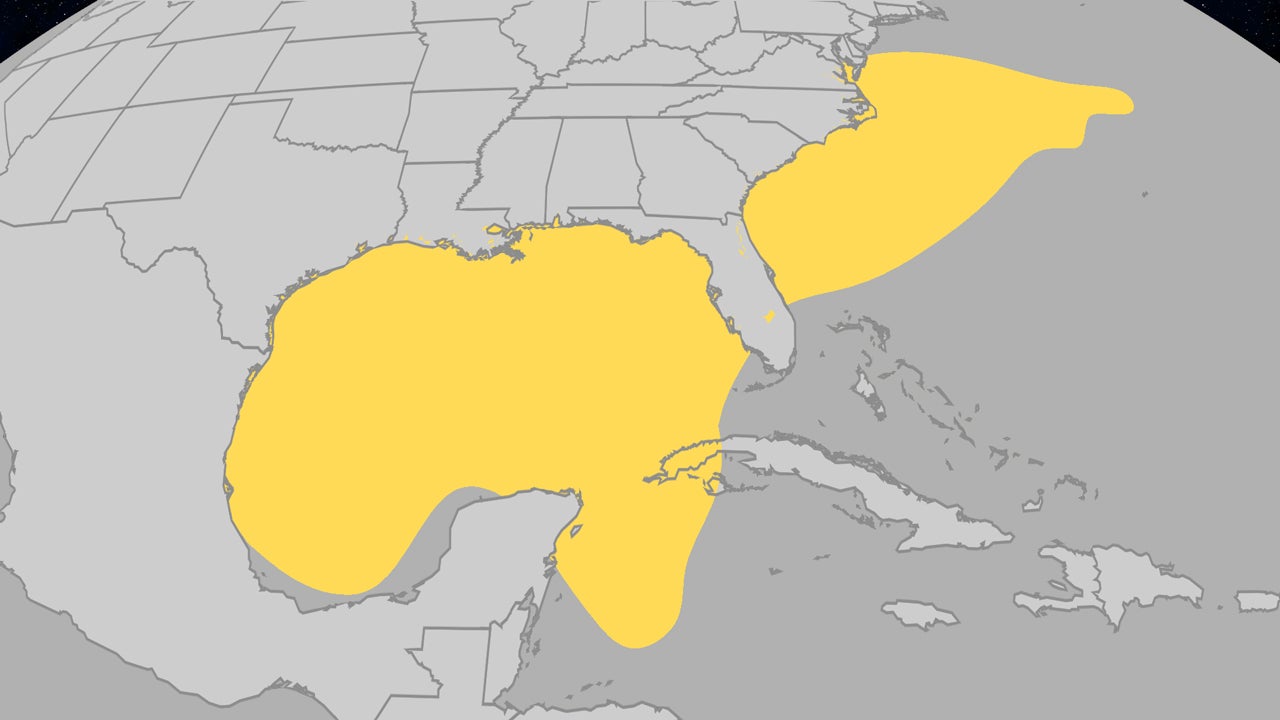Where Do Atlantic Hurricanes Form In June? Understanding The Season's Start

Welcome to your ultimate source for breaking news, trending updates, and in-depth stories from around the world. Whether it's politics, technology, entertainment, sports, or lifestyle, we bring you real-time updates that keep you informed and ahead of the curve.
Our team works tirelessly to ensure you never miss a moment. From the latest developments in global events to the most talked-about topics on social media, our news platform is designed to deliver accurate and timely information, all in one place.
Stay in the know and join thousands of readers who trust us for reliable, up-to-date content. Explore our expertly curated articles and dive deeper into the stories that matter to you. Visit Best Website now and be part of the conversation. Don't miss out on the headlines that shape our world!
Table of Contents
Where Do Atlantic Hurricanes Form in June? Understanding the Season's Start
June marks the official start of the Atlantic hurricane season, a period of heightened risk for coastal communities across the Americas and beyond. But where exactly do these powerful storms begin to brew? Understanding the formation process and typical genesis locations is crucial for effective preparedness and response. This year, meteorologists predict an above-average hurricane season, making understanding these early-season patterns even more vital.
While the peak of hurricane season is typically in August and September, June storms, though less frequent, can still pack a significant punch. Their formation relies on several key factors, all converging in specific areas of the Atlantic Ocean.
The Anatomy of a June Hurricane: Understanding Formation
Hurricanes, also known as cyclones or typhoons depending on their location, are fueled by warm ocean waters. The sea surface temperature needs to be at least 80°F (27°C) to provide the necessary energy for storm development. This warm water evaporates, creating moisture-laden air that rises, causing low pressure at the surface. As this air rises, it cools and condenses, forming clouds and releasing more heat, further fueling the cycle. This process requires a specific atmospheric environment with low wind shear – meaning minimal change in wind speed and direction with altitude. Strong wind shear can disrupt the storm's vertical development, preventing it from intensifying.
The Coriolis effect, a consequence of the Earth's rotation, also plays a crucial role. It causes rotating winds around the low-pressure center, leading to the characteristic swirling pattern of a hurricane. This effect is strongest further from the equator, explaining why hurricanes rarely form near the equator itself.
Typical June Hurricane Formation Zones: From the Tropics to the Open Ocean
June hurricanes frequently form in several key areas:
- The Caribbean Sea: The warm waters and often favorable atmospheric conditions of the Caribbean make it a breeding ground for early-season storms. Storms developing here can quickly intensify as they move westward towards Central America or northward towards the Gulf of Mexico.
- The Gulf of Mexico: While less common in June than later in the season, the Gulf's warm waters can support hurricane development. Storms forming here pose a direct threat to the southeastern United States.
- The Tropical Atlantic: Off the coast of Africa, near the Cape Verde Islands, is another area prone to hurricane formation. These storms often track westward across the Atlantic, potentially impacting the Caribbean islands, Central America, and even the southeastern United States. These Cape Verde-type hurricanes are known for their potential to become major storms and travel long distances.
Understanding the difference between a tropical wave, depression, storm and hurricane is key:
- Tropical Wave: A disorganized area of thunderstorms.
- Tropical Depression: A low-pressure system with organized thunderstorms and sustained winds of up to 38 mph (62 km/h).
- Tropical Storm: A tropical depression with sustained winds of 39-73 mph (63-118 km/h). It receives a name at this stage.
- Hurricane: A tropical storm with sustained winds of 74 mph (119 km/h) or higher.
Staying Informed and Prepared: Resources and Actions
Staying informed about developing weather systems is crucial. Reliable sources include:
- The National Hurricane Center (NHC): - The official source for hurricane information in the Atlantic basin.
- Your local National Weather Service: They provide localized forecasts and warnings.
Key Actions for Preparedness:
- Develop a hurricane plan: This should include evacuation routes, emergency supplies, and communication strategies.
- Monitor forecasts regularly: Stay updated on the latest weather information.
- Protect your property: Secure loose objects and consider hurricane shutters or boarding up windows.
June hurricanes, while less frequent than later in the season, highlight the importance of being prepared throughout the entire Atlantic hurricane season. Understanding where these storms form and how they develop allows for better preparedness and a more effective response should a threat emerge. Remember, early preparation is key to mitigating the potential damage and ensuring the safety of your community.

Thank you for visiting our website, your trusted source for the latest updates and in-depth coverage on Where Do Atlantic Hurricanes Form In June? Understanding The Season's Start. We're committed to keeping you informed with timely and accurate information to meet your curiosity and needs.
If you have any questions, suggestions, or feedback, we'd love to hear from you. Your insights are valuable to us and help us improve to serve you better. Feel free to reach out through our contact page.
Don't forget to bookmark our website and check back regularly for the latest headlines and trending topics. See you next time, and thank you for being part of our growing community!
Featured Posts
-
 Ohtanis Transition To The Dodgers A Promising Start On The Mound
May 27, 2025
Ohtanis Transition To The Dodgers A Promising Start On The Mound
May 27, 2025 -
 Caitlin Clark And The Indiana Fever A Bitter Loss Marred By Late Game Officiating Calls
May 27, 2025
Caitlin Clark And The Indiana Fever A Bitter Loss Marred By Late Game Officiating Calls
May 27, 2025 -
 Late Messi Free Kick Inter Miami Avoid Defeat
May 27, 2025
Late Messi Free Kick Inter Miami Avoid Defeat
May 27, 2025 -
 Top Beaten Down Tech Stocks To Watch In 2024 A Buying Opportunity
May 27, 2025
Top Beaten Down Tech Stocks To Watch In 2024 A Buying Opportunity
May 27, 2025 -
 1300 Tesla Stock Growth Analyzing Elon Musks Recent Statements
May 27, 2025
1300 Tesla Stock Growth Analyzing Elon Musks Recent Statements
May 27, 2025
